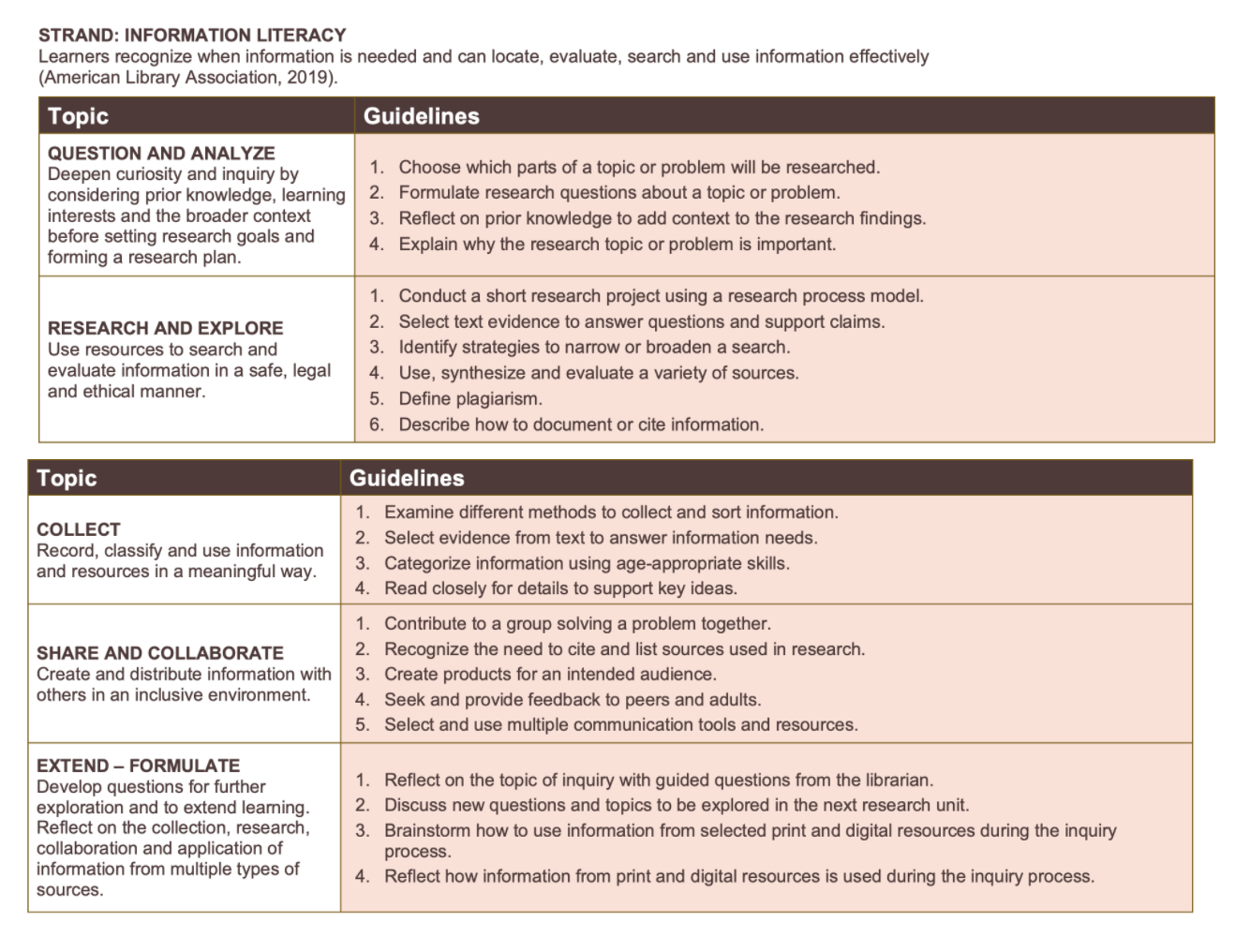Teaching information literacy can start by simply asking students to ask questions about topics that interest them. Once they have their questions, help them make a plan for gathering information about the topics. Lead students to the resources and assign meaningful, technology-rich methods to evaluate and repackage the information they learn.
An inquiry or research process is essential and can be taught to guide students through these steps. Go! Ask, Act, Achieve, as shared in previous lessons, is a tool powered by INFOhio to help students in grades 4-10 learn the inquiry process by providing digital tools, resources, and strategies. This tool provides a framework for problem-based learning and research and guides students through the steps of the inquiry process.
Since a deep dive has been shared in the Inquiry Framework lesson and you have had the opportunity to go through the steps of this framework, take a closer look at the Teacher Guide: Go! Ask, Act, Achieve which supports educators when using this tool.
The teacher's guide is set up as a HyperDoc, keeping all of the needed links in one place. The HyperDoc is set up in seven sections: Engage, Explore, Explain, Apply, Share, Reflect, and Extend. Before beginning an inquiry or research project with students, read through the teacher guide. Use the directions below to help you move through each section.
Engage
Watch the video, What Is Inquiry-Based Learning?
Explore
What type of inquiry will work best for your library or classroom situation?
Explain
How would you explain INFOhio's approach to inquiry-based learning?
Apply
Explore the Google docs for each step in Go! Ask, Act, Achieve. Review each one before teaching that step with students for additional teaching tips and how to get started.
Share
When teaching the inquiry process, share examples of learning using #INFOhioWorks on Social Media.
Reflect
Read the article In a World of Mandates, Making Space for Inquiry. Reflect on your school and how this article relates, or doesn't relate, to your experience.
Extend
To learn more about inquiry-based learning, explore the resources shared in this section.
As in other academic content areas, the library also has guidelines and standards which provide a scope and sequence of what should be taught and when. Ohio has developed library guidelines and the American Association of School Librarians (AASL) has standards for learners and librarians. Review these guidelines and standards for the grade levels you teach. You can learn more about the guidelines and standards in the Collection Development class lesson Curriculum 101.
Ohio Library Guidelines
The Ohio Library Guidelines have been divided into guidelines for learners and guidelines for librarians. The Ohio Library Guidelines for Learners are chunked by grades in the following groups: K-2, 3-5, 6-8, and 9-12, and there are four strands identified that should be taught in a comprehensive library program. The strands are Digital Literacy, Foundations for Lifelong Learning and Literacy, Information Literacy, and Media Literacy. Standards provide an overview of what skills should be taught in the library and at what age. The images below show the Information Literacy competencies that students should learn in grade levels 3-5.

American Association of School Librarians' Standards (AASL) for Learners
The AASL Standards Framework for Learners provides an alternative inquiry framework to support information literacy. There are seven Shared Foundations and Key Commitments:
These Shared Foundations and Key Commitments connect with the Domains and Competencies Think, Create, Share, and Grow. The Framework "reflects a comprehensive approach to teaching and learning by demonstrating the connection between learner, librarian, and library standards."
Answer the following questions in the INFOhio School Library Basics Open Space group Discussions. Find the Teaching Information Literacy reflection question in the Discussions tab. Reply to the thread and review other participants' responses.
Fetch is avaiable to INFOhio automated schools. If you are an INFOhio school, please log in with your school username/password using the button at the top-left corner of this page.
For more information about Fetch, please visit the Fetch information page or contact INFOhio support at https://support.infohio.org.